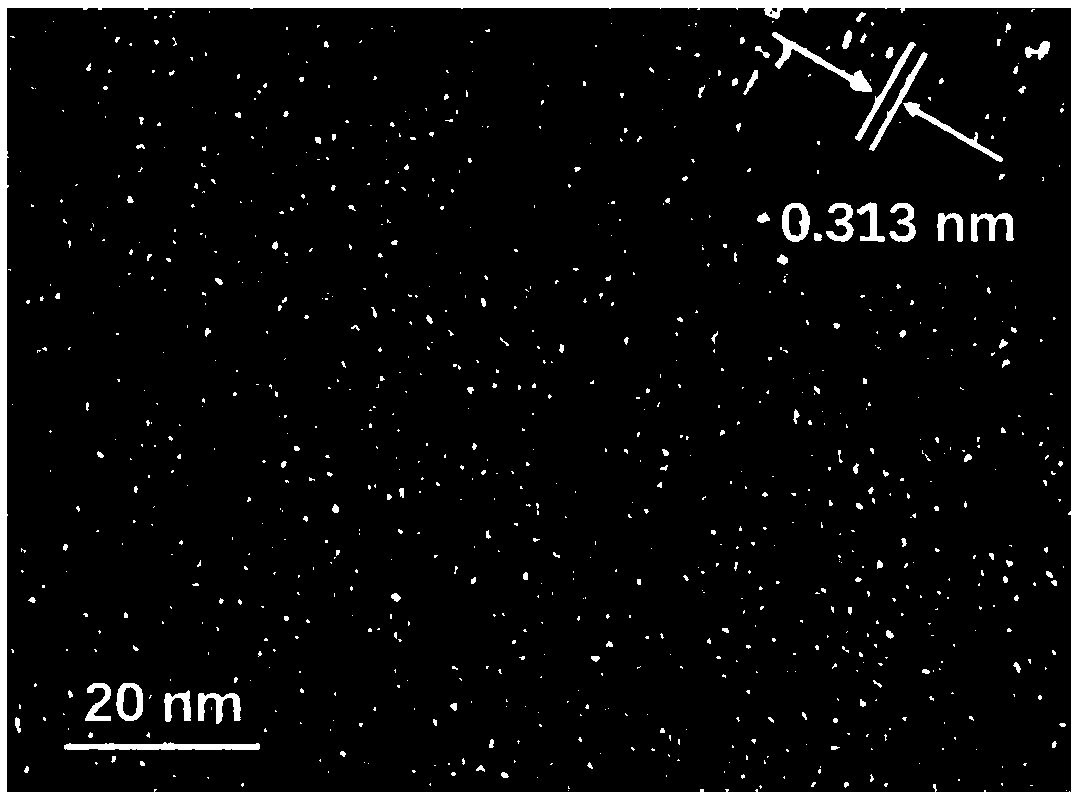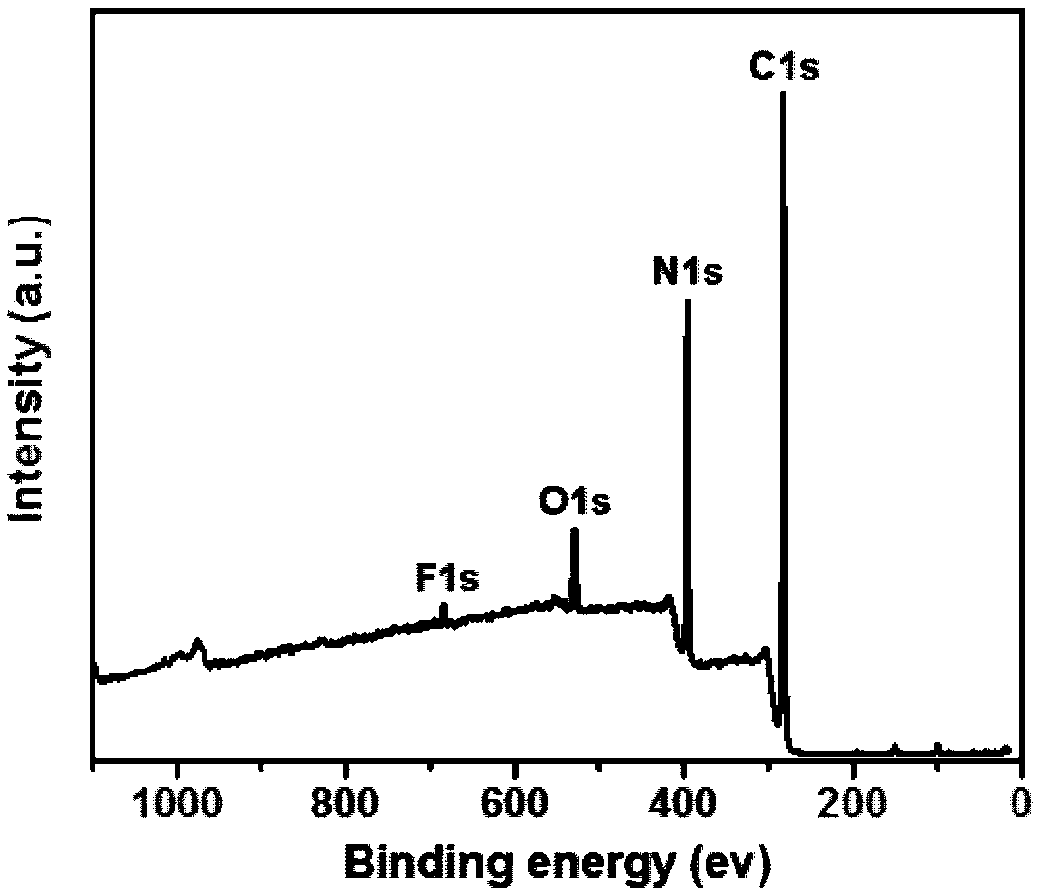Fluorine-nitrogen doped carbon quantum dot as well as preparation method and application thereof
A carbon quantum dot, nitrogen doping technology, applied in the fields of nano-biomedical materials, synthesis technology and biomaterials, can solve the problems of narrow cell range, restricted wide application, etc., and achieves simple method, good biocompatibility, and cytotoxicity. low effect
- Summary
- Abstract
- Description
- Claims
- Application Information
AI Technical Summary
Problems solved by technology
Method used
Image
Examples
Embodiment 1
[0044] With 2,3,5,6-tetrafluoroterephthalic acid as the fluorine source, then add 1.8kDa BPEI as the nitrogen source, dissolve in ethanol to obtain the precursor solution (2,3,5,6-tetrafluoro-p-phenylene Diformic acid concentration is 70mmol / L, 1.8kDa BPEI concentration is 35mmol / L), then the precursor solution is transferred to a polytetrafluoroethylene autoclave and reacted at 180°C for 6h, cooled to room temperature to obtain a suspension, Separation by dialysis and lyophilization to obtain fluorine and nitrogen doped carbon quantum dots (F-CDs).
[0045] figure 1 It is a TEM image of F-CDs. It can be seen that the size of fluorine and nitrogen doped carbon quantum dots is uniform, about 5nm, and the dispersion is uniform. figure 2 It is the XPS graph of F-CDs. It can be seen that there are 4 signals in the graph, which are 284.8eV (C 1s), 398.4eV (N 1s), 531.6eV (O 1s) and 686.8eV (F 1s).
[0046] The 19F NMR method is used to characterize and detect the above products....
Embodiment 2
[0051] With 2,3,5,6-tetrafluoroterephthalic acid as fluorine source, add 600Da BPEI as nitrogen source, dissolve in ethanol, obtain precursor solution (2,3,5,6-tetrafluoroterephthalic acid Concentration is 70mmol / L, 600Da BPEI concentration is 35mmol / L), and then the precursor solution is transferred to a polytetrafluoroethylene autoclave and reacted at 180°C for 6h, cooled to room temperature to obtain a suspension, and then dialyzed Separation and freeze-drying to obtain fluorine- and nitrogen-doped carbon quantum dots. Refer to Example 1 for gene transfection efficiency experiments and cytotoxicity experiments. The gene transfection vector prepared in this example has the best transfection efficiency (81.21%) of HEK 293T cells and the transfection efficiency (64.24%) of COS-7 cells, far higher than the transfection efficiency of 600Da BPEI in HEK 293T cells Transfection efficiency (1.35%) and COS-7 cell transfection efficiency (0.35%), also significantly higher than 25kDa ...
Embodiment 3
[0053] With 2,3,5,6-tetrafluoroterephthalic acid as fluorine source, then add 25kDa BPEI as nitrogen source, dissolve in ethanol, obtain precursor solution (2,3,5,6-tetrafluoroterephthalic acid The concentration is 70mmol / L, and the concentration of 25kDa BPEI is 35mmol / L), then the precursor solution is transferred to a polytetrafluoroethylene autoclave and reacted at 180°C for 6h, cooled to room temperature to obtain a suspension, and then dialyzed Separation and freeze-drying to obtain fluorine- and nitrogen-doped carbon quantum dots. Refer to Example 1 for gene transfection efficiency experiments and cytotoxicity experiments. The best transfection efficiency (85.11%) of HEK 293T cells and the transfection efficiency (68.29%) of COS-7 cells of the gene transfection vector prepared in this example are obviously higher than 25kDa PEI (HEK 293T~56.25%, COS-7~22.66%) and Lipo 2000 (HEK 293T~65.11%, COS-7~33.47%) efficiency, and the average fluorescence intensity of transfected...
PUM
 Login to View More
Login to View More Abstract
Description
Claims
Application Information
 Login to View More
Login to View More - R&D
- Intellectual Property
- Life Sciences
- Materials
- Tech Scout
- Unparalleled Data Quality
- Higher Quality Content
- 60% Fewer Hallucinations
Browse by: Latest US Patents, China's latest patents, Technical Efficacy Thesaurus, Application Domain, Technology Topic, Popular Technical Reports.
© 2025 PatSnap. All rights reserved.Legal|Privacy policy|Modern Slavery Act Transparency Statement|Sitemap|About US| Contact US: help@patsnap.com



